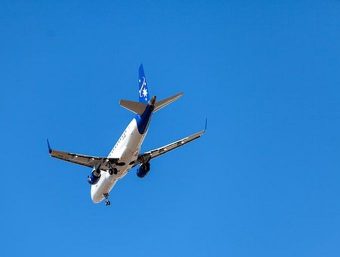
Governments proposed for the first time on Monday to reduce climate pollution from airplanes, plugging one of the biggest loopholes in last December’s landmark Paris agreement. The global initiative was a first attempt to halt carbon emissions from air travel – one of the fastest growing sources of climate pollution. In a call with reporters, White House officials described the standards as “a huge deal”, noting that the aviation authority has also proposed an aspirational goal to achieve carbon neutrality by 2020.
But campaign groups, specifically the International Council on Clean Transportation, said the proposed standards were a missed opportunity and would have little real effect in curbing emissions. The standards proposed at an expert meeting of the International Civil Aviation Organisation (Icao) in Montreal would apply to all new commercial and business aircraft delivered after 1 January 2028. But they exclude aircraft that are already in use, and as most airlines have lifetimes of 20-30 years, it will take decades to cover the current fleet. In addition, the standards would on average require only a 4% reduction in the cruise fuel consumption of new aircraft, compared to 2015. The proposals will be put to countries for formal adoption next year.
Icao said the standard was aimed at larger aircraft, which were responsible for the vast majority of global aviation emissions. “The goal of this process is ultimately to ensure that when the next generation of aircraft types enter service, there will be guaranteed reductions in international CO2 emissions,” Olumuyiwa Benard Aliu, president of the Icao council said.
“We also recognize that the projected doubling of global passengers and flights by 2030 must be managed responsibly and sustainably.” The exclusion of high-polluting industries such as international aviation and shipping was seen as a major weakness of the historic agreement reached last December. Currently, air travel and shipping together account for about 5% of global greenhouse gas emissions, but are projected to account for about 30% by 2050. But emerging economies had balked at the idea of including shipping and aviation in the Paris agreement, and so negotiators left them out of the deal. White House officials said they were satisfied with the proposed standard – given the range of countries’ positions. The European Union and some emerging economics had been reluctant to take stronger action. “This is a really a strong result,” the officials said.
“It’s the first ever CO2 standards for aircraft covering existing aircraft.” But campaign groups suggested the Icao recommendations would do very little to rein in emissions – and in some cases lagged behind technology that was already in use. According to an analysis by the International Council on Clean Transportation, some of the top performing commercial aircraft were already achieving the standard – with room to spare. By 2020, eight years before the proposed standards were even due to come into effect, the average aircraft would already be 10% more efficient than the Icao standard. “Given the substantial lead time for the standards, along with anticipated fuel efficiency gains for new aircraft types already in development by manufacturers, the standards will serve primarily to prevent backsliding in emissions,” ICCT said in a statement.
“Additional action would be required for the standard to reduce emissions below business as usual.” Vera Pardee, an attorney for the Centre for Biological Diversity, said the proposed standard put an additional burden on the Obama administration to make good on earlier promises to cut aviation emissions. The Environmental Protection Agency had been waiting for Icao to bring in its standards before moving to cut emissions from the domestic airline industry. However, the White House would not say whether the EPA would propose those new domestic standards before Barack Obama leaves the White House.
www.theguardian.com

